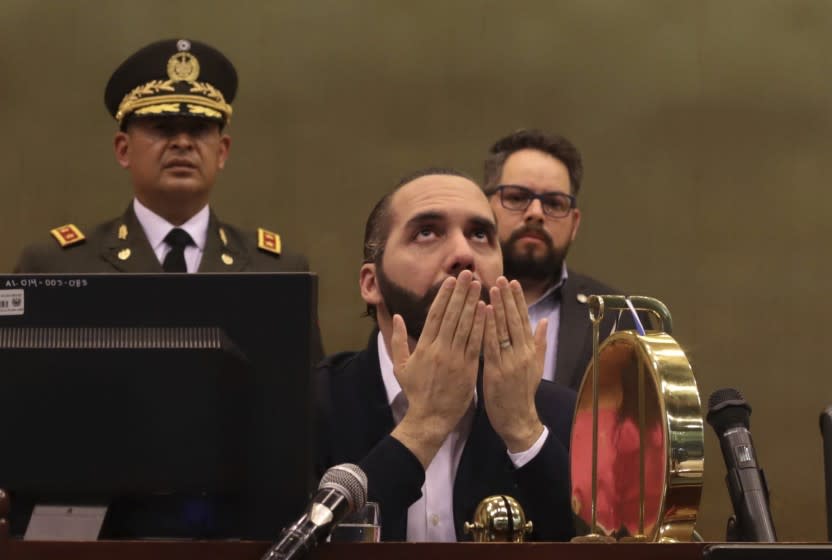Podcast: A look at El Salvador's meme-loving, press-hating autocratic president, Nayib Bukele

- Oops!Something went wrong.Please try again later.
Listen to this episode of The Times: Apple | Spotify | Stitcher | Google
A populist becomes his country’s president with a historic win. He’s a brash outsider, a relative newcomer, and he promises to drain the swamp. No more politics as usual, he says, because his country is under attack — and he’s here to save it. But this new president begins to upend democracy. Ousts his opponents to consolidate power. Declares he wants to change the country’s constitution to suit him. And trolls his haters on social media all along the way. These are the hallmarks of Nayib Bukele, the president of El Salvador. If Bukele succeeds in his power grabs, it has big implications for the United States.
Today, L.A. Times Latin America correspondent Kate Linthicum and El Faro reporter Jimmy Alvarado take us into the current crisis in El Salvador and explain how we got here. Author Roberto Lovato also talks about how Bukele’s actions affect the Salvadoran diaspora in the United States.
Host: Gustavo Arellano
Guests: L.A. Times Latin America correspondent Kate Linthicum, El Faro reporter Jimmy Alvarado and Roberto Lovato, author of "Unforgetting: A Memoir of Family, Migration, Gangs and Revolution in the Americas"
More reading:
El Salvador’s president, seen as having an authoritarian streak, is about to tighten grip on power
Bukele's Legislative Assembly ousts Supreme Court magistrates and Attorney General
A Salvadoran writer busts the Trump myth of the tattooed immigrant threat
This story originally appeared in Los Angeles Times.

